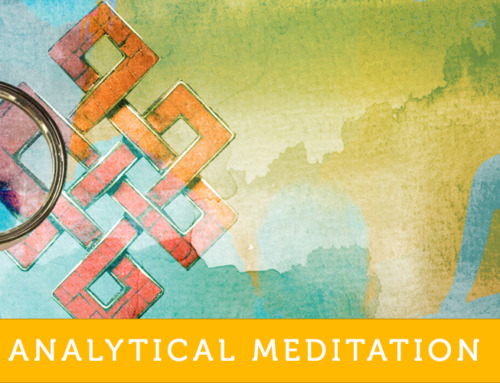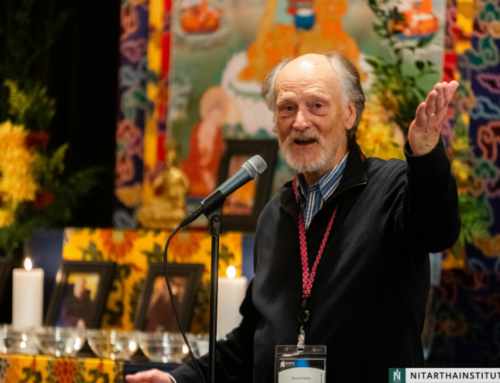Yogacara: the remedy for the poor diet of “Mind Only”
by Mitra Dr. Karl Brunnhölzl. Mitra Brunnhölzl will be teaching on Yogacara at July’s Summer Institute.
To remedy the poor diet of “Mind-Only” always being refuted by Madhyamaka as the highest Buddhist view and do justice to the great Indian Mahayana Yogacara tradition, recent teachings on Vasubandhu’s Thirty Verses by H.H. the 17th Karmapa, Ogyen Trinley Dorje, extensively discuss the need to review the way Tibetan doxographies present the so-called “Mind-Only School” in light of the classical Yogacara School in India and China.
Yogacara is (mis)represented as “Mind-Only” for three main reasons:
- superficial and out-of-context judgments based on a unidimensional understanding of what seem to be stereotypical “buzzwords,” such as cittamatra,
- not treating the explanations of Yogacara in their own terms but looking at them through the lens of Madhyamaka, and
- indiscriminately following Tibetan doxographical categories.
Unlike in Tibet, it is obvious from Indian sources that in India Madhyamaka was never the commonly accepted pinnacle of all Buddhist philosophical schools, in neither sutrayana or vajrayana. Rather, the Yogacara School was highly influential in the fields of both sutra and tantra for over a millennium, and it certainly was never eclipsed or “defeated” by the Madhyamikas.
Yogacara was not only not immune or oblivious to notions such as “emptiness,” “lack of nature,” and “selflessness,” which often have been wrongly considered to be uniquely Madhyamaka, but it included them in its own explanations. Thus, hermeneutical frameworks such as the three natures, the threefold lack of nature and the three kinds of emptinesses are not presented to contradict the prajñaparamita sutras or Nagarjuna’s Madhyamaka, but rather, they equally serve to explain emptiness, just within a further-developed exegetical system of meditative experience.
Furthermore, in contrast to the typical Madhyamaka reluctance to speak about the specifics of relative reality, the Buddhist path of purifying the deluded mind and the fruition of that process, classical Yogacara not only presents sophisticated analyses of ultimate reality but it also:
- elaborates on how the deluded mind operates, how it can make the transition to the unmistaken nondual wisdom of seeing mind’s ultimate nature and what are the characteristics and fruitions of this wisdom;
- investigates not only the definitive meaning of the scriptures in a nonreifying manner but also what happens experientially in the minds of those who study and practice the definitive meaning;
- provides broader contextualizing comments on sutras and tantras; and
- addresses typical misconceptions about emptiness, such as nihilism, which was a common concern since Nagarjuna, even among Buddhists.
Thus, the Yogacara movement considered itself to be a continuation of all preceding developments in Buddhism and not a radical departure from them or even a distinct new school. Yogacara writings present digests of intricate abhidharma analyses, explorations of mind and its functions in both its ignorant and awakened modes, depictions of all the levels of the paths of the three yanas, subtle descriptions of meditative processes and presentations of epistemology and reasoning. In particular, Yogacara analyses of mental processes also have great potential to significantly contribute to modern cognitive science.
Hence, compared to the unidimensional Madhyamaka approach of relentlessly deconstructing everything through reasoning, Yogacara is not only not inferior to Madhyamaka but exhibits a much more encompassing outlook on the human experience in general and on the soteriological issues of the Buddhist path in particular.





